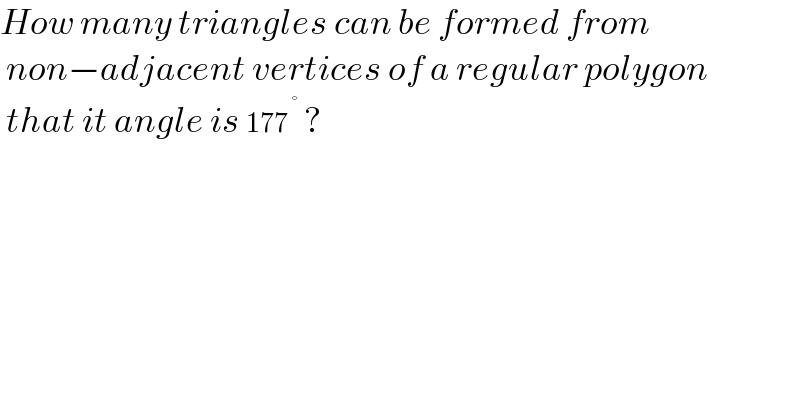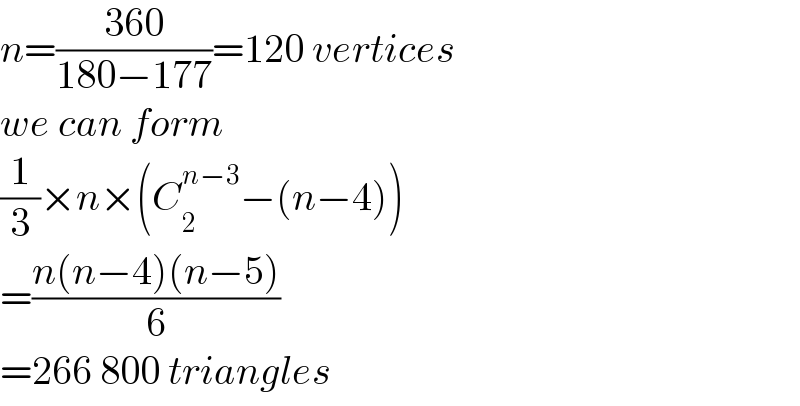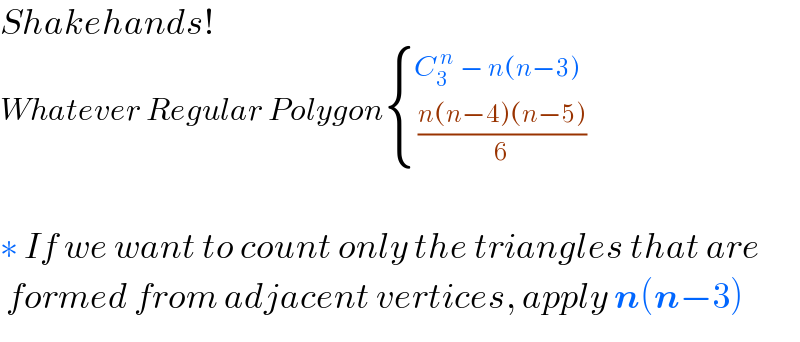
Question and Answers Forum
Previous in Permutation and Combination Next in Permutation and Combination
Question Number 180773 by Acem last updated on 17/Nov/22

Answered by mr W last updated on 17/Nov/22

Commented by Acem last updated on 17/Nov/22

Commented by mr W last updated on 17/Nov/22

Commented by Acem last updated on 17/Nov/22
![Yes Sir, you will do it! thank you Note: The number ∈ ]265 349, 266 801[](Q180817.png)
Commented by mr W last updated on 17/Nov/22

Commented by Acem last updated on 17/Nov/22

